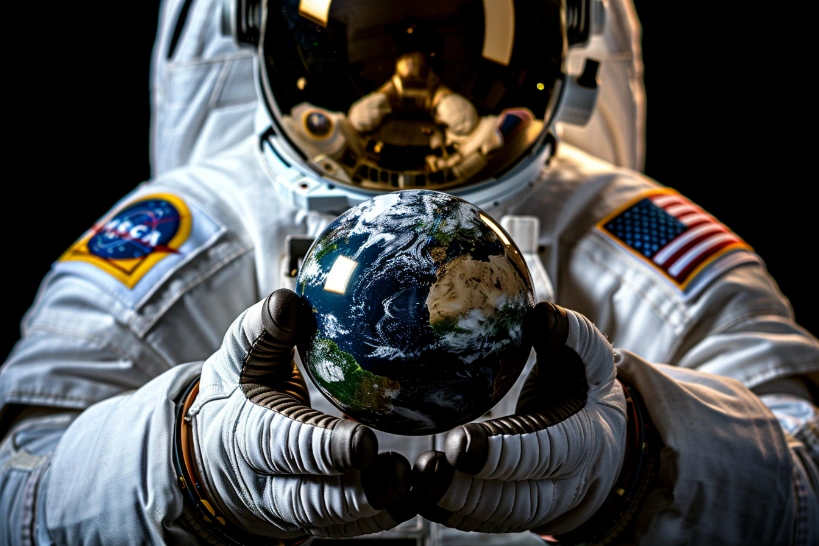YOU THINK ANYONE’S FALLING FOR THIS CRAP?! Every company’s suddenly got a damn tree hugger on staff! Earth Day rolls around and they paint the logo green, like that fixes ANYTHING!
Newsflash, morons: planting a sapling while your factory pollutes a river is worse than doing NOTHING!
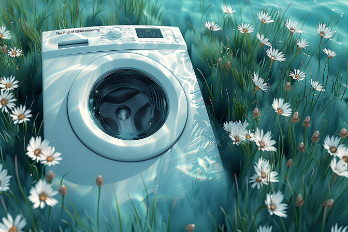
This is why the world’s on fire!
The problem of performative sustainability
It’s not about feeling good, it’s about DOING good. But “good” takes effort, investment… things corporations HATE. So they slap on a recycled icon and call it a day.
Why consumers see right through it
You think your customers are IDIOTS?! They see the same wasteful packaging, the overseas manufacturing, the endless junk emails… and THEN a blog post about how much you love whales? GET BENT!
Digital Pollution is Real

Picture this: you wake up in the morning, roll over, and the first thing you do is unlock that little glowing rectangle that rules your life. You know the one – it’s practically become another appendage at this point. And as you start mindlessly scrolling, something alarming happens… absolutely nothing! But don’t let that fool you, because behind the scenes, you’ve just released an invisible plume of pollution into the atmosphere. Congratulations, you digital litterbug!
Now, I know what you’re thinking – “John, what the hell are you on about? My phone running Facebook isn’t belching out smog like a 1970s Chevy Impala.” And sure, you’re technically correct. But what if I told you that the data centers powering all of our online activities pump out more CO2 each year than the entire aviation industry? Suddenly that hilarious cat video doesn’t seem quite so innocuous anymore, does it?
Understanding your digital carbon footprint
It’s a concept called digital pollution, and most of us have never heard of it. We go about our online lives blissfully unaware that every email sent, every photo uploaded, and every video streamed has a hidden environmental cost in the form of the electricity needed to power massive server farms. It’s like the Internet has pulled a fast one on us – we thought we were being all eco-friendly by going paperless, but meanwhile we’ve been burning through fossil fuels like there’s no tomorrow just to make sure we don’t miss an Instagram post from that girl we met one time six years ago.

And sure, in the grand scheme of things, your individual contribution to digital pollution is probably pretty small. But multiply that by the billions of people now online around the world, and we’ve got a Big Tech-sized problem on our hands. It’s death by a trillion tweets.
So what can we do about it, short of hurling our phones into the sea and living out our days in a secluded log cabin? Well, we could start by being more mindful of our online habits and cutting back on unnecessary digital detritus. But the real solutions are going to have to come from the top, with big tech companies investing in renewable energy and finding more efficient ways to store and process data.
Because let’s face it, the Internet isn’t going anywhere – for better or worse, it’s become the connective tissue of our society. But that doesn’t mean we have to keep treating it like a bottomless pit. It’s time to wise up, clean up our online act, and start treating the planet with the same care we give our social media profiles. Either that, or I’ll see you all in that log cabin.
The Hidden Cost of Digital Pollution

Let’s talk about the elephant in the server room: the internet isn’t some magical cloud of pixie dust and good intentions. It’s a massive, energy-hungry beast. Every click, every scroll, every cat video you binge – it all leaves a carbon footprint.
Think about it: data centers, those giant warehouses full of humming computers? They’re not powered by sunshine and unicorn farts. They run on electricity, often from the not-so-clean kind. And those numbers add up fast!
Now, I’m not saying you have to give up Netflix and go live in a cave (although some days, the temptation is real). But here’s the thing: most of us are shockingly unaware of the environmental cost of our digital habits. Did you know that sending a single email can have the same carbon impact as a plastic bag? Or that streaming an hour of video generates roughly the same emissions as driving a mile?
We need a wake-up call. Because while recycling and switching to LED bulbs are great, ignoring the hidden pollution of our digital lives is like rearranging deck chairs on the Titanic while the iceberg looms ahead. It’s time to start thinking about our online choices – do we really need those five nearly identical photos uploaded, or that newsletter we never read? Small changes multiplied by millions can make a real difference..
Lean Marketing

Have you ever landed on a website that takes a million years to load? Autoplay videos, flashing banners, more pop-ups than a whack-a-mole game… It’s the digital equivalent of a traffic jam. And I’m not just talking about user frustration – all that digital bloat guzzles energy!
Think of it like this: those overloaded websites are the bloated SUVs of the internet. Big, slow, and pumping out unnecessary pollution. Nobody likes them, and the planet certainly doesn’t.
Lean marketing, on the other hand, that’s your fuel-efficient hybrid. Streamlined design, easy navigation – it gets the job done without wasting resources. Give people what they want: clear information, a way to find what they need, and for the love of all that’s holy, ditch the autoplay videos!
So, do yourselves and the planet a favor – streamline your websites! Your audience will thank you, your energy bill will shrink, and maybe, just maybe, we can slow down this whole climate change thing. Wouldn’t that be a win-win?
AI: A Potential Tool, Not a Magic wand
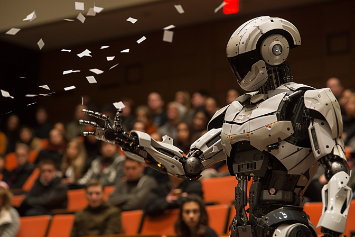
Let’s be frank, friends: artificial intelligence has become the new “organic” or “artisanal” – a buzzword slapped onto everything to make it sound vaguely better. And yes, AI can be a powerful tool in the fight for a greener future. It can analyze vast datasets, identifying patterns humans would miss, optimizing processes, and pinpointing areas for improvement.
But let us not be fooled by the allure of the machine mind. AI is not some benevolent overlord that will solve all our climate woes with a few lines of code. It’s a tool, and like any tool, it can be used wisely or foolishly.
Think of it like a hyper-efficient robot chef. It can follow complex recipes, saving wasted ingredients. But feed it a bad recipe – say, one focused on shipping exotic foods across the globe – and it will happily churn out unsustainable culinary disasters.
AI won’t replace the hard work of changing our systems, our habits, and our priorities. It can’t make us less wasteful consumers or fix a supply chain built on exploitation. What it can do is illuminate our choices and magnify their consequences, for better or worse.
So, let’s use AI with a healthy dose of skepticism and a firm hand on the “off” switch. It’s a tool, not a savior.
Transparency is Non-Negotiable
You want me to believe you give a damn about the planet? That all this “green” crap is sincere? Well here’s a newsflash for you, sunshine: I smell bulls*** a mile off. Every corporation’s playing this holier-than-thou game, slapping a leaf logo on the same wasteful junk, spewing feel-good slogans that mean exactly nothing.
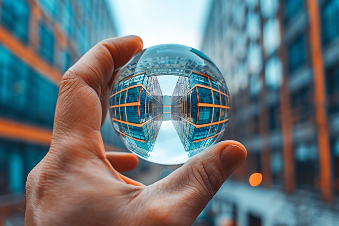
It’s enough to make me puke.
Here’s the thing, folks: the road to a less screwed-up planet is gonna be long and ugly. It’s not about fancy recycling bins in the lobby, it’s about overhauling the whole damn system. And you know what? There gonna be setbacks, mistakes… things that make you look bad.
Tough.
Want my trust? Want my business? Then ditch the PR spin and start leveling with me. Own up to where you’re falling short. Show me the challenges, not just the shiny successes. Invite me on the journey, warts and all.
Because here’s the deal: I might respect a company that’s honestly trying, even if they haven’t got it all figured out. But a company that lies, that hides the ugly truth behind a “sustainable” facade? They can take their greenwashing and shove it where the sun don’t shine.
Sustainability: Your Brand’s Only Compass

Enough with the eco-posturing. Consumers are sick of brands using sustainability as a marketing ploy. In a world teetering on the edge of climate disaster, we demand authenticity. Sustainability can’t be a buzzword; it has to be the bedrock of your business.
Imagine your brand’s compass – sustainability is the needle pointing true north. Every product, supply chain decision, and marketing campaign must align with that direction. Building for longevity instead of landfills, ensuring ethical practices instead of hidden exploitation – that’s how you earn trust and loyalty.
This is a win-win. Customers are seeking out brands with a conscience. Embrace sustainability as your guiding star, and you’ll find a future that’s profitable, impactful, and ensures we actually have a planet to enjoy.
Earth Day: Use It or Lose It
Earth Day. It comes every year, another tick on the clock. We plant a tree, pick up some trash…a day dedicated to the planet that sustains us. And then, the stores roll out the sales, companies slap on green-washed logos, and we forget. Forget the oil in the oceans, the plastic clogging the rivers, the air barely fit to breathe.
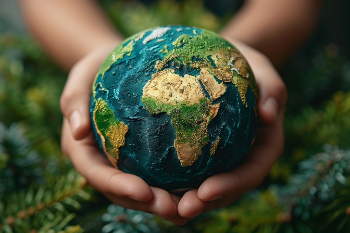
Earth Day should be a wake-up call, a moment we look in the mirror and ask, “Is this the best I can do? Is this the world I want for my children?” The fight can’t end with a feel-good post or a recycled bottle. If we want change, it’s got to simmer in our hearts long after the banners fade. We need to hold our leaders to higher standards, make our voices heard with our wallets. We need to remember the planet – the only one we have – deserves our effort not just on some calendar date, but every single day. Because Earth Day is a gift. Use it, or we truly will lose it.
- Share it on social media: Tag brands you think need this message
- Use it in blog posts or articles: Raise awareness about corporate responsibility
- Turn it into a manifesto: Inspire your own company or community to do better
- Check out our custom GPT to find sustainability focused activities near you


